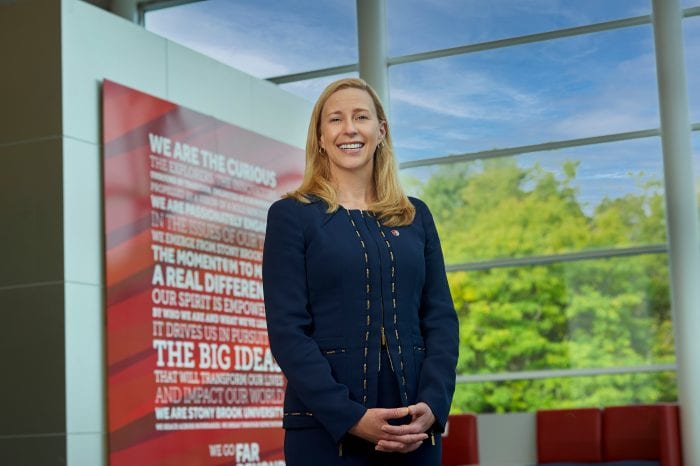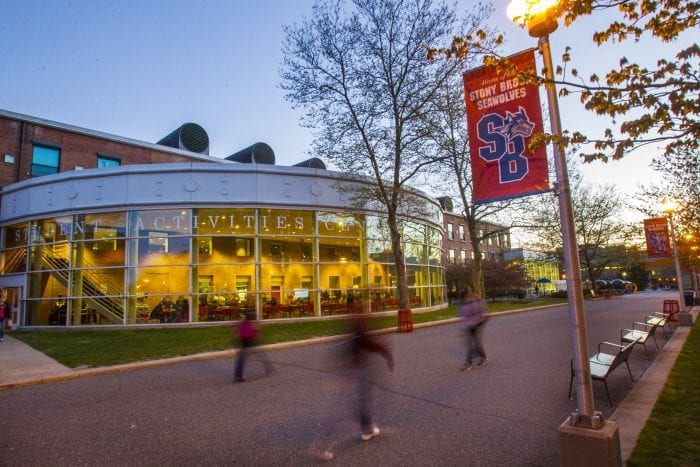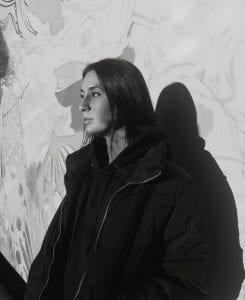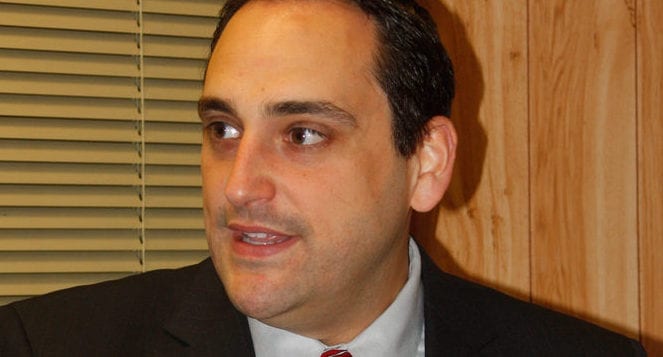Stony Brook University has been at the center of the COVID-19 pandemic, as hospital staff has treated and comforted residents stricken with the virus, and researchers have worked tirelessly on a range of projects — including manufacturing personal protective equipment. Amid a host of challenges, administrators at Stony Brook have had to do more with less under budgetary pressure. In this second part of a two-part seriesPresident Maurie McInnis offers her responses in an email exchange to several questions. The Q and A is edited for length. See last week’s paper for an interview with Interim Provost Fotis Sotiropoulos.
TBR News: What are the top three things that keep you up at night?
President Maurie McInnis: My first and foremost priority is to make sure we never compromise or become complacent when it comes to the health and safety of our campus community. Another priority is to develop strategies for best working through our budget challenges, which were exacerbated by COVID-19. And the third thing that keeps me up at night — and fills my waking hours — is making sure I am doing all I can to bring our vast resources together so we can continue to uphold the mission and values of Stony Brook University.
TBR: How do you feel the University has managed through the pandemic and what are some of the strategies you found particularly effective?
McInnis: Stony Brook’s successes in keeping our doors open for in-person learning during the fall semester are well-documented. And I continue to be impressed by, and grateful for, what our entire campus community did to make that happen… From testing students before they came back to campus, to everyone joining together as a community to follow our safety protocols. COVID-19 has revealed our unique strengths — our community engagement, seriousness about academics, personal sense of accountability and collective responsibility for one another.
TBR: How do you feel the University has managed through the economic crisis?
McInnis: Even as the COVID crisis highlighted our strengths, it’s also shone a light on some problematic patterns — particularly in the area of budgets — that in previous years were able to slip by, for Stony Brook and other universities. Our priorities right now are to learn from this moment and build for a more sustainable future.
TBR: Even in the midst of historic challenges, what things still excite and inspire you about Stony Brook University?
McInnis: The short answer is that the things that drew me to Stony Brook initially are the same characteristics that excite and inspire me today. I’m talking about its commitment to a diverse and talented student body; faculty’s dedication to delivering world-class research, scholarship and patient care; its impressive record of high-powered research and student success; its role as a major economic engine in the region; and, its emphasis on community, civility and cross-cultural exchange. Our unique dual role as a top-rated, research-oriented university and hospital stood up to the test of the historically challenging year we’ve had.
TBR: How has Stony Brook’s hybrid learning platform differentiated it from other university online platforms?
McInnis: What made Stony Brook’s learning model so successful is the fact that we worked with areas across campus, intensely and continuously, to make sure we had the right fit for our school, students, faculty members, staff, community, everyone. A hybrid model made the most sense, safety-wise and to ensure the best academic experience.
TBR: If you weren’t in triage mode, what would you be doing?
McInnis: When I came to Stony Brook, I identified three areas that we will continue to focus on during, and post-pandemic, and as we tackle ongoing budget challenges. First, we will continue to support our world-class faculty. We’ll do that by creating an environment in which students succeed, and by continuing to enable cutting-edge breakthroughs in research and medicine. Second, we will embrace our own diversity to strengthen the intellectual and social environment at Stony Brook by creating a ‘one campus’ culture through increased multidisciplinary efforts. And third, we will continue to drive social and economic change on Long Island, in New York State and across the country by staying community-focused and engaging in partnerships that benefit the region.
TBR: What do you plan and hope for a year from now? What’s the best and worst case scenarios?
McInnis: I hope that we can use our experience during this pandemic to spark positive change for future generations of Stony Brook students, faculty and community members, and build on our strengths. We are the number one institution in reducing social inequality. And we need to continue to embrace our incredible impact in driving intergenerational socioeconomic growth and social mobility. Connecting students with opportunities after they graduate — from research positions to internships to career advising — will be important in expanding that impact.
I also want to build on our strengths as both a state-of-the-art healthcare facility and cutting-edge research institution. I want to bring these two areas closer together, blending our expertise across disciplines, as we’re already starting to do. We also plan to apply lessons learned from our shift to remote and hybrid learning.
TBR: Are there COVID research initiatives that Stony Brook is involved with that you hope to continue?
McInnis: Fighting the COVID-19 pandemic has required researchers from many disciplines to come together, demonstrating the depth and breadth of our capabilities. Stony Brook is involved in more than 200 dedicated research projects across all disciplines. These projects span 45 academic departments and eight different colleges and schools within the University, and I’m impressed with the caliber and sense of urgency with which this work is being done.
TBR: If you were offered the opportunity to take the vaccine today, would you?
McInnis: Yes, I would take it in a heartbeat, right now.










